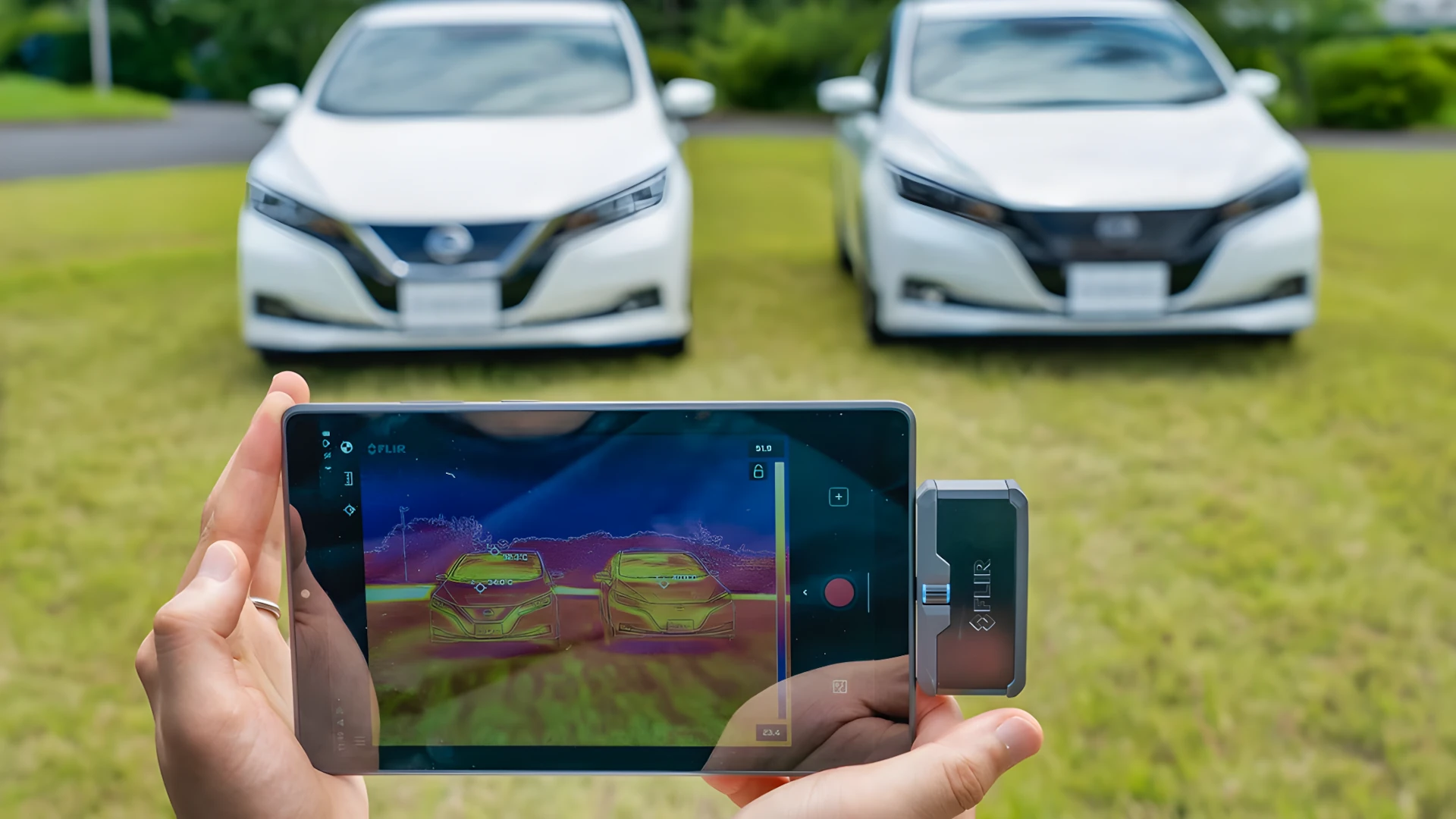Technological innovation in the automotive industry has proven promising in recent years, and Nissan stands out in this scenario by developing a paint that reflects heat. With this new technology, the manufacturer aims not only to improve the internal comfort of vehicles but also to contribute to energy efficiency. In this article, we will explore how this special paint works and the benefits it can bring to drivers.
Nissan Revolutionizes with Heat Reflecting Paint in Vehicles
Nissan, in collaboration with the Malaysian company Radi-Cool, is leading the research of a new paint that promises to reduce the internal temperature of vehicles exposed to the sun. This innovative paint uses nanomaterials that work on two fronts: reflecting sunlight and deflecting heat. This approach is especially crucial in a world where global temperatures are rising, and the need for energy-efficient solutions is becoming increasingly urgent.
Practical tests conducted by Nissan at Tokyo Haneda Airport have shown encouraging results. A vehicle painted with this new paint has an exterior surface temperature up to 12 degrees Celsius lower than a vehicle painted with conventional paint. Additionally, the internal temperature of the car was reduced by up to 5 degrees, highlighting the effectiveness of the technology in keeping automotive environments cooler and more comfortable.
The technology behind the paint involves the combination of microparticles that act synergistically. One part of the microparticles is responsible for reflecting infrared rays, while the other generates electromagnetic waves that help dissipate thermal energy. This innovation can result in significant fuel savings, as the vehicle’s air conditioning systems will not need to work as hard to maintain a pleasant internal temperature.
Nanoparticle Technology for Reducing Internal Temperature
Nissan’s innovation is not limited to the paint’s surface but also involves the application of active nanoparticles that contribute to thermal efficiency. These particles are designed to provide an effective thermal barrier, minimizing heat transfer to the interior of the vehicle. The result is a cooler internal environment, even on hot days, without a proportional increase in energy consumption.
Dr. Susumu Miura, who leads the project at the Nissan Research Center, emphasizes the importance of developing a solution that not only cools vehicles but does so without consuming additional energy. Although the paint currently has an application thickness of 120 micrometers, which is significantly thicker than conventional automotive paint, there are plans to reduce this thickness in order to enable mass production.
Furthermore, Nissan is exploring the possibility of offering different colors for this paint, thereby expanding its applications. The initial focus is on painting utility vehicles, which are often exposed to the sun and, therefore, would benefit the most from this technology. By keeping the internal temperature lower, the company not only improves vehicle performance but also promotes a more sustainable use of energy resources.
Nissan’s new heat-reflecting paint represents a significant advance in the search for sustainable solutions in the automotive industry. With the expectation of reduced production costs and the possibility of offering the technology in various colors, Nissan is positioning itself as a leader in automotive innovation. The anticipation is that, soon, this technology will be available in most vehicles, providing comfort and energy efficiency for all drivers.
Author: Fabio Isidoro
Founder and editor-in-chief of Canal Carro, he dedicates himself to exploring the automotive universe with depth and passion. A car and technology enthusiast, he produces technical content and in-depth analyses of national and international vehicles, combining quality information with a critical eye for the public.












